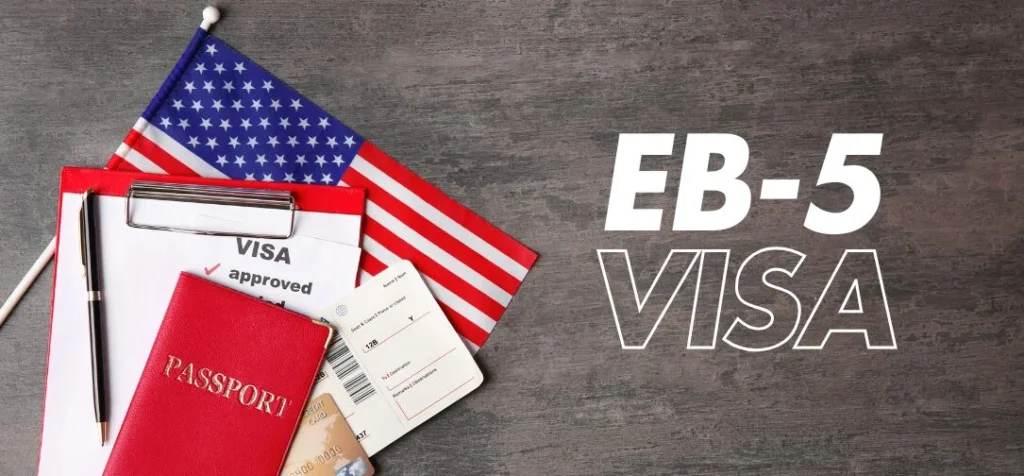The dream of living and working in the United States attracts thousands of individuals and families every year. For investors with the financial capacity and vision, the U.S. offers a unique immigration pathway that leads to lawful permanent residency—through the EB5 investor visa program. This program allows foreign nationals to invest in a U.S. business, stimulate the economy, and in return, obtain a green card for themselves and eligible family members.
While the process may seem complex at first, understanding its structure and requirements can simplify your decision-making.
Understanding the EB5 Immigration Program
The EB5 program, officially known as the Immigrant Investor Program, was initiated by the U.S. government in 1990. It is administered by the United States Citizenship and Immigration Services (USCIS) to encourage foreign investments that create jobs in the country. The visa enables investors and their immediate family (spouse and children under 21) to apply for a U.S. green card by investing a specific amount in a U.S. commercial enterprise.
To better understand the legal and financial aspects, including eligibility, approved project types, and legal documentation, refer to the official explanation of EB5投资移民要求.
Key Investment Requirements and Qualifications
Investment Amounts
The program mandates a minimum investment of $1.05 million, unless the project is located in a Targeted Employment Area (TEA)—typically rural or high-unemployment areas—where the requirement drops to $800,000. This reduced investment threshold encourages funding in economically distressed regions.
Job Creation Criteria
The investor’s capital must lead to the creation of at least 10 full-time jobs for U.S. workers within two years of receiving the conditional green card. If participating through a USCIS-designated regional center, the investment may count indirect or induced jobs as well.
Lawful Source of Capital
Applicants must document and verify the lawful origin of their investment capital. This includes earnings from business operations, personal savings, asset sales, loans secured by personal property, inheritance, or gifts. Transparency and traceability are vital to USCIS approval.
Investment Options: Direct Business or Regional Center?
There are two primary paths under the EB5 program:
- Direct Investment: In this case, you launch your own U.S. business, take part in its operations, and ensure direct job creation.
- Regional Center Investment: You invest in large-scale government-approved projects. This option allows for passive involvement and includes job creation through indirect means.
The regional center route remains popular due to reduced personal responsibility and access to pre-structured projects, which lowers the risk for foreign investors.
Exploring Modern Business Models in EB5 Applications
While many applicants focus on traditional industries like manufacturing, hospitality, or real estate development, the EB5 program also supports innovative digital ventures. In today’s digital-first economy, tech startups, e-commerce platforms, and gaming-related services offer new investment potential.
Such ventures also provide opportunities to leverage trending industries, particularly those that attract younger audiences and foster online communities—offering revenue potential and job creation in equal measure.
Application Process Overview
Step 1: Choose a Qualified Investment
Conduct due diligence before committing to a direct business or regional center. Assess the business model, location, and scalability to ensure compliance with EB5 requirements.
Step 2: Submit Form I-526
This petition is your formal application to USCIS. It must include proof of investment, source of funds documentation, and a detailed business plan outlining job creation strategy.
Step 3: Receive Conditional Residency
If I-526 is approved, you receive a conditional green card valid for two years. During this time, your investment must remain active, and job creation must be in progress.
Step 4: Submit Form I-829
At the end of the two-year period, submit this form to remove residency conditions. You must prove that the investment was sustained and the job creation goals were met.
Why Tech-Based Businesses Appeal to Modern Investors
With digital transformation sweeping industries, tech startups and online commerce platforms are becoming more attractive for EB5 applicants. A business that provides digital goods, such as gaming accessories or virtual merchandise from Roblox’s Grow a Garden, can scale quickly and has fewer physical infrastructure requirements.
Additionally, such ventures allow investors to employ developers, content managers, digital marketers, and customer support representatives—helping satisfy EB5’s employment conditions.
Frequently Asked Questions (FAQs)
Can I start an online business and still qualify for EB5?
Yes. As long as your online business is U.S.-based and meets the program’s investment and job creation requirements, it qualifies. A gaming merchandise site is a valid example.
What documents are required to prove the source of funds?
USCIS accepts tax returns, business income statements, loan agreements (secured), property sale records, and bank transaction logs. Accuracy and transparency are critical.
How long does it take to receive permanent residency?
It typically takes 24 to 36 months to receive the initial conditional green card. Permanent residency is granted after fulfilling requirements over the two-year conditional period.
Do I have to live near my business?
No. You can reside anywhere in the U.S., regardless of your investment’s physical location.
Is the investment refundable if the visa is denied?
Generally, no. EB5 investments must be “at risk” and cannot come with a guarantee of return. This includes refunds in the case of visa denial, unless the project policy states otherwise.
Final Thoughts
The EB5 investor visa provides a strategic route to U.S. residency for forward-thinking individuals ready to contribute to the American economy. With flexibility in investment types and the ability to include immediate family members, the program remains one of the most attractive legal immigration options for global investors.
While many pursue traditional routes like real estate or hospitality, embracing innovative ventures—can offer an exciting and compliant path. As long as the business meets USCIS criteria, aligns with job creation objectives, and maintains transparent records, the opportunity for long-term success and residency is well within reach.


